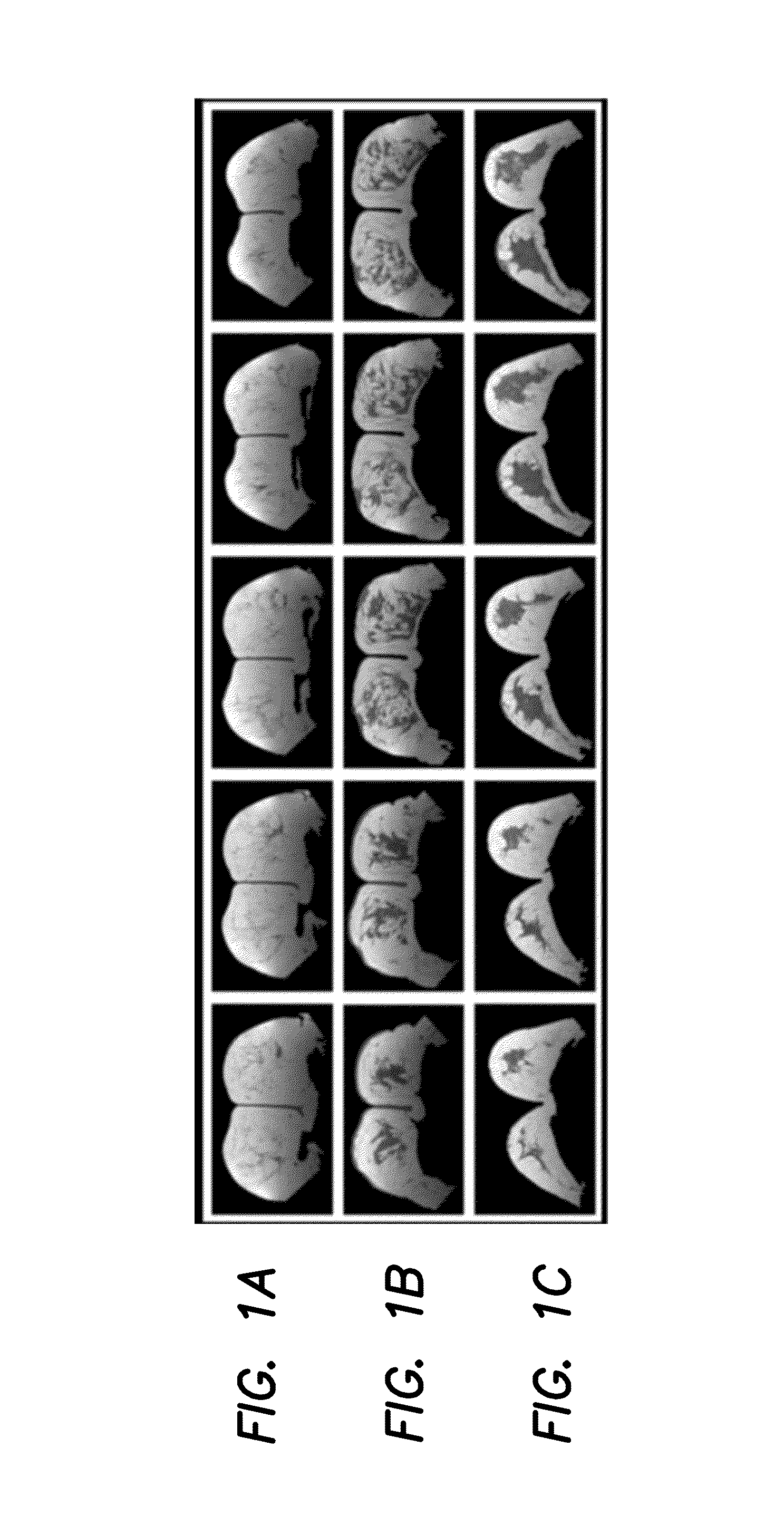Method and apparatus for quantitative analysis of breast density morphology based on MRI
a breast density and quantitative analysis technology, applied in image analysis, image enhancement, instruments, etc., can solve the problems of higher cancer incidence, affecting cancer risk, and showing association, and achieve the effect of facilitating the investigation of the relationship
- Summary
- Abstract
- Description
- Claims
- Application Information
AI Technical Summary
Benefits of technology
Problems solved by technology
Method used
Image
Examples
Embodiment Construction
[0051]We have previously published an analysis method utilizing computer algorithms to segment the fibroglandular tissue for quantitative measurement of the percent density in the whole breast using MRI. In the illustrated embodiment we address a new question: In addition to the percent density, we use quantitative parameters to characterize the distribution pattern of the dense tissues. As an initial approach, we analyzed two distinct breast parenchymal patterns that can be classified visually: The intermingled pattern with intermixed fatty and fibroglandular tissues, and the central pattern with confined fibroglandular tissue inside surrounded by fatty tissue outside. Breasts from these two groups may have comparable percent densities, but differ in the distribution pattern of their dense tissue. Four different morphological parameters were calculated based on the three dimensional distribution pattern of segmented fibroglandular tissues, and their capacity to differentiate betwee...
PUM
 Login to View More
Login to View More Abstract
Description
Claims
Application Information
 Login to View More
Login to View More - R&D
- Intellectual Property
- Life Sciences
- Materials
- Tech Scout
- Unparalleled Data Quality
- Higher Quality Content
- 60% Fewer Hallucinations
Browse by: Latest US Patents, China's latest patents, Technical Efficacy Thesaurus, Application Domain, Technology Topic, Popular Technical Reports.
© 2025 PatSnap. All rights reserved.Legal|Privacy policy|Modern Slavery Act Transparency Statement|Sitemap|About US| Contact US: help@patsnap.com



